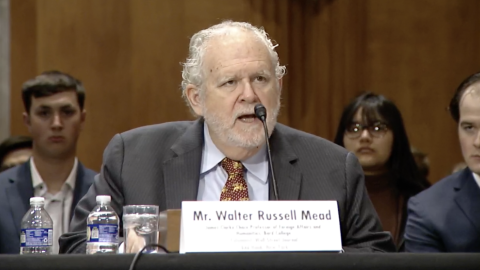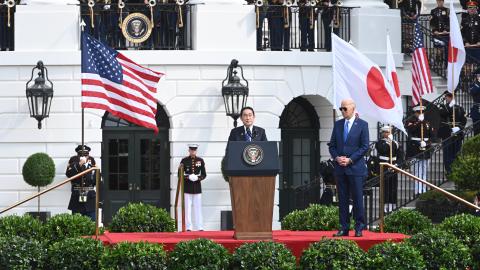Washington is dreaming like it’s 1918, but Jerusalem is fighting like it’s 1945.
President Biden is approaching the conflict in Gaza with the mindset that ended World War I, while the Israelis are fighting with the spirit that transformed Germany 27 years later. In 1918, the United States and its allies sought a German surrender that would neutralize its war-making capabilities without having to transform its state and society. Leaving Germany unoccupied and its latent capacity for war intact, the armistice failed to establish a stable European order.
A true solution to what contemporaries called the “German question” came only after World War II, when America and its allies demanded unconditional surrender from Hitler, occupied Germany and de-Nazified its institutions. The Israelis believe, correctly, that only Hamas’ unconditional surrender, the dismantling of its military capabilities and the de-Hamasification of Gazan institutions will deliver a stable order. But Biden has been significantly distancing America from these aims.
Hamas, Biden said in his State of the Union, could end the war “by releasing the hostages, laying down arms and surrendering those responsible for October 7th.” The president was effectively calling for a World War I-style armistice, one that would allow armed Hamas cadres not just to survive in Gaza but to shape its political future. The president’s decision last week to abstain from voting on a United Nations Security Council resolution calling for an immediate ceasefire — not predicated on the release of Israeli hostages — is the armistice plan in action.
Biden’s intentions became clear just two days after the State of the Union, when he warned that an Israeli campaign to take Rafah, Hamas’ last stronghold in Gaza, would cross an American “red line,” possibly prompting the United States to withhold military assistance. Netanyahu responded directly and bluntly. “I have a red line,” he said. “You know what [my] red line is? That October 7 doesn’t happen again.” Biden’s red line amounts to a call for a negotiated end to the war that will leave Hamas in de facto control over Gaza.
Unless Israel conquers Rafah, Hamas’ command-and-control system will remain intact. Thanks to its control of the border with Egypt — the official crossing and the clandestine tunnels — its domination of Gaza’s economy will persist, and it will rearm. Naturally, it will fight against any effort to build a new order in Gaza. The Biden team’s answer to this challenge, rejected by Israeli leaders and the public alike, is for Israel to install a “reformed and revitalized” Palestinian Authority in Gaza. But the idea the PA can or will work with Israel to suppress Hamas is a fantasy.
In 2006, Gazans voted the Fatah movement, the Palestinian Authority’s organizing element, out of power in favor of Hamas. In 2007, Hamas gunmen ousted PA security forces entirely from the Gaza Strip. Even on the West Bank, which Fatah dominates, Hamas’ power is growing. Since Oct. 7, West Bank support for Hamas has quadrupled from 12% in September 2023 to 44% in December 2023.
The only force preventing Gaza redux in the West Bank is the critical Israeli military control. The armistice the president is trying to force on the Israelis will not only lose the war but cost the peace as well. The Biden administration insists planning for “the day after” must begin now, before the war is won. But America’s historical experience teaches us otherwise.
After Pearl Harbor, for example, President Franklin Roosevelt studiously avoided announcing a postwar political order. It was only in January 1943 that he defined the military aims of a war he had been raging for more than a year.
“We had a general called U.S. Grant. His name was Ulysses Simpson Grant, but in my . . . early days he was called ‘Unconditional Surrender’ Grant,” he told a British audience. “The elimination of German, Japanese, and Italian war power means the unconditional surrender by Germany, Italy, and Japan. That means a reasonable assurance of future world peace.”
The Biden team routinely excoriates Israeli Prime Minister Benjamin Netanyahu for behaving like FDR. The Allies implemented full demilitarization — the disbandment of the SS, SA and Gestapo, as well as the German land, air and naval forces — and full de-Nazification, the abolishment of all Nazi laws and justice for Nazi war criminals. The Allied military occupation of Germany lasted seven years, and US forces remain in Germany to this day.
The first step toward creating a truly stable order in Gaza is for the Biden administration to think less about revitalizing the Palestinian Authority and more about revitalizing its connection with the American historical experience.















